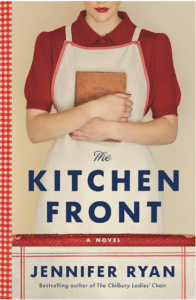
Just in time to finish up Women’s History Month, here’s a historical fiction novel that follows four British women as they cope with food rationing, grief, and societal pressures during World War II.
I’ve had an ARC (Advance Reader’s Copy) of The Kitchen Front on my Kindle for years now, and just never got around to it. Cooking the Books has once again knocked another book off my TBR (To Be Read) mountain. I just wished I enjoyed it more.
I’m in the minority here. TKF has a 3.97 star rating on Goodreads and a 4.4 star rating on Amazon. The novel details the lives of four British women from varying backgrounds as they compete for a spot on a radio program during World War II. Rationing was in effect at this time, and the book opens with the weekly allotment for one adult. A stick of margarine, half a stick of butter, three pints of milk, one cup of sugar…very different from the way we eat today. The radio program, based on an actual one, helped women stretch out their rations with creative (sometimes very creative) recipes. I enjoyed this look at an aspect of the war that I hadn’t seen written about before, especially in the crowded field of WWII novels. Unfortunately, that was about all I liked.
Overall, I found the book to be flat, predictable, and breezy. I am all for breezy books that give your mind a break, but that’s not how this one is advertised. The characters do a lot of speaking out loud; the author definitely does a lot more telling as opposed to showing. Perhaps because I didn’t enjoy it, I also found myself nitpicking. A character says he wasn’t aware that another was in the contest, then on the next page asks why the efforts to sabotage her had failed. A barn owl hoots instead of screams. Little things that should have been caught by the editor. Without giving away spoilers, a major life-changing decision is flip-flopped in the span of three pages. This just wasn’t the book for me, but as I said, it is the book for a lot of people.
There are a number of starter, main course, and dessert recipes featured in the book from historic sources, all of which adhere to the Ministry of Food rationing to various degrees. Unsurprisingly, there was an active black market for ingredients, and those who could afford them didn’t go without. Many of the recipes offer a lot of flexibility, which is to be expected when working with limited ingredients. For various reasons, I declined to attempt The Ministry of Food’s Sheep’s Head Roll or Chef James’s Whale Meat and Mushroom Pie. Instead, I made Audrey’s Fruit Scones. I vaguely remember making scones 20 years ago. This recipe contains a lot less sugar than modern recipes and produces a…perfectly adequate vehicle for getting butter and/or jam to your mouth. The apricot flavor was good, with comments that it ‘could use more apricot, less scone’ but other than that? Eh. A coworker said ‘mostly good, a little bland – but aren’t all scones?’. It does produce an incredibly wet, sticky dough; if you think you’ve got enough flour on your surface, think again.
Scones: 2.5/5 (based on all opinions)
Book: 1/5 (based on my opinion)
The Recipe
Audrey’s Fruit Scones
Makes 12 scones
Ingredients:
3 cups flour
½ teaspoon salt
5 teaspoons baking powder
1 tablespoon sugar
1 ½ cups dried fruit (raisin, sultanas, red currants, apricots, prunes, etc.)
¼ cup butter
¼ maragaine, lard, or suet (I used margarine)
1 egg, beaten, or the equivalent in dried egg powder
1 cup milk
Instructions:
Preheat oven to 425 F/220 C. Sieve the flour, salt, and baking powder into a bowl. Add the sugar and dried fruits and mix. Cut the butter and margarine into small pieces and rub it in. Mix the egg and milk and slowly add until the dough is a stiff consistency. Roll it out into a thick layer, about 1 inch thick, and use a floured cutter to cut it into circles. Place on a greased baking tray and bake for 10 minutes or until risen and golden brown.


 Welcome to Cooking the Books (where we try recipes found in, well, books!)
Welcome to Cooking the Books (where we try recipes found in, well, books!)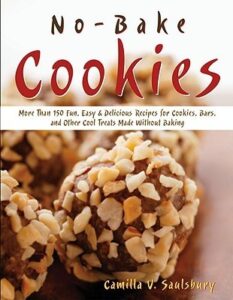 With it being the end of the year, many people are pressed for time–me included. With activities nearly everyday outside of work, Camilla Saulsbury’s
With it being the end of the year, many people are pressed for time–me included. With activities nearly everyday outside of work, Camilla Saulsbury’s Recipe
Recipe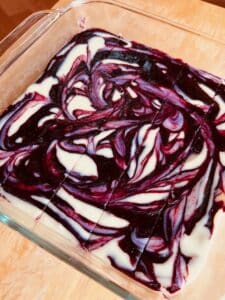 Welcome back to Cooking the Books (where we try recipes found in, well, books!)
Welcome back to Cooking the Books (where we try recipes found in, well, books!)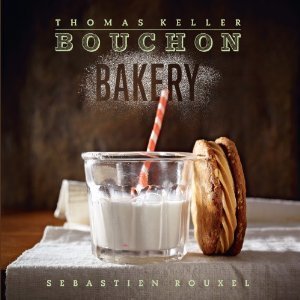 I was looking for a pumpkin scone recipe, and while I didn’t find one of those, I did find Bouchon Bakery. It’s a pretty big book filled with all sorts of bread, muffins, and other carb-filled confections. As with most modern cookbooks, personal anecdotes, pieces of advice, and beautiful photos are interspersed between recipes. The personal anecdotes don’t mean much to me, since I have no idea who these folks are, but I did find a lot of good advice I had never heard before. Who knew you were supposed to lightly beat and strain eggs before mixing them to batter? Without the photos this would definitely feel overwhelming. Even with the photos, this cookbook could keep you busy for a very long time– reading it and baking from it. The authors are in favor of sacrificing convenience for the freshest ingredients and most authentic flavors. This means you better be prepared, as some doughs need to rest before they are baked. You also might need to look in specialty shops for things like fresh vanilla beans or whole nutmegs.
I was looking for a pumpkin scone recipe, and while I didn’t find one of those, I did find Bouchon Bakery. It’s a pretty big book filled with all sorts of bread, muffins, and other carb-filled confections. As with most modern cookbooks, personal anecdotes, pieces of advice, and beautiful photos are interspersed between recipes. The personal anecdotes don’t mean much to me, since I have no idea who these folks are, but I did find a lot of good advice I had never heard before. Who knew you were supposed to lightly beat and strain eggs before mixing them to batter? Without the photos this would definitely feel overwhelming. Even with the photos, this cookbook could keep you busy for a very long time– reading it and baking from it. The authors are in favor of sacrificing convenience for the freshest ingredients and most authentic flavors. This means you better be prepared, as some doughs need to rest before they are baked. You also might need to look in specialty shops for things like fresh vanilla beans or whole nutmegs.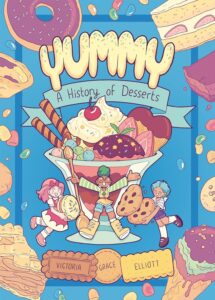 Welcome to Cooking the Books, where we try recipes found in, well, books! This month, Children’s Assistant & STEM Specialist Ms. Meghan tried out a recipe from one of her recent favs:
Welcome to Cooking the Books, where we try recipes found in, well, books! This month, Children’s Assistant & STEM Specialist Ms. Meghan tried out a recipe from one of her recent favs: